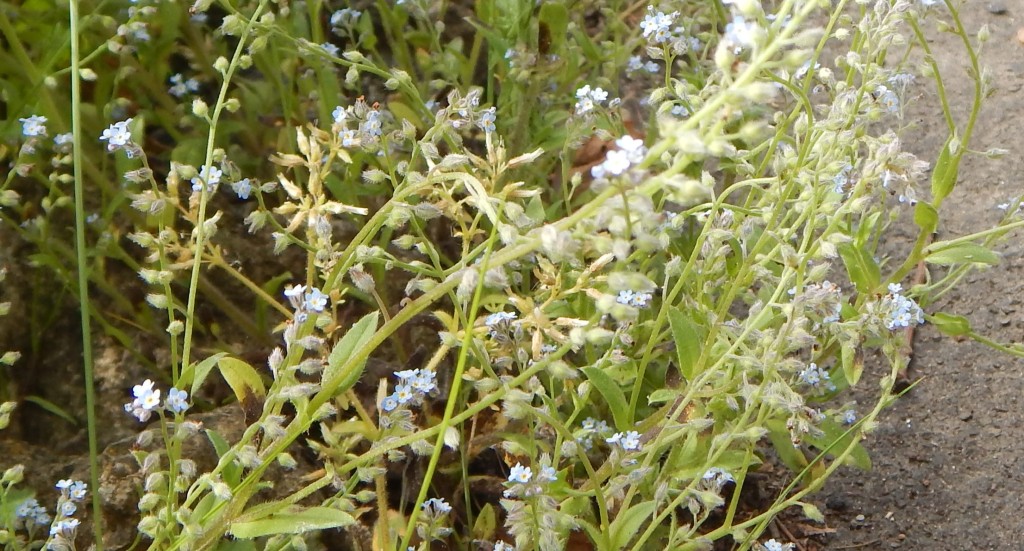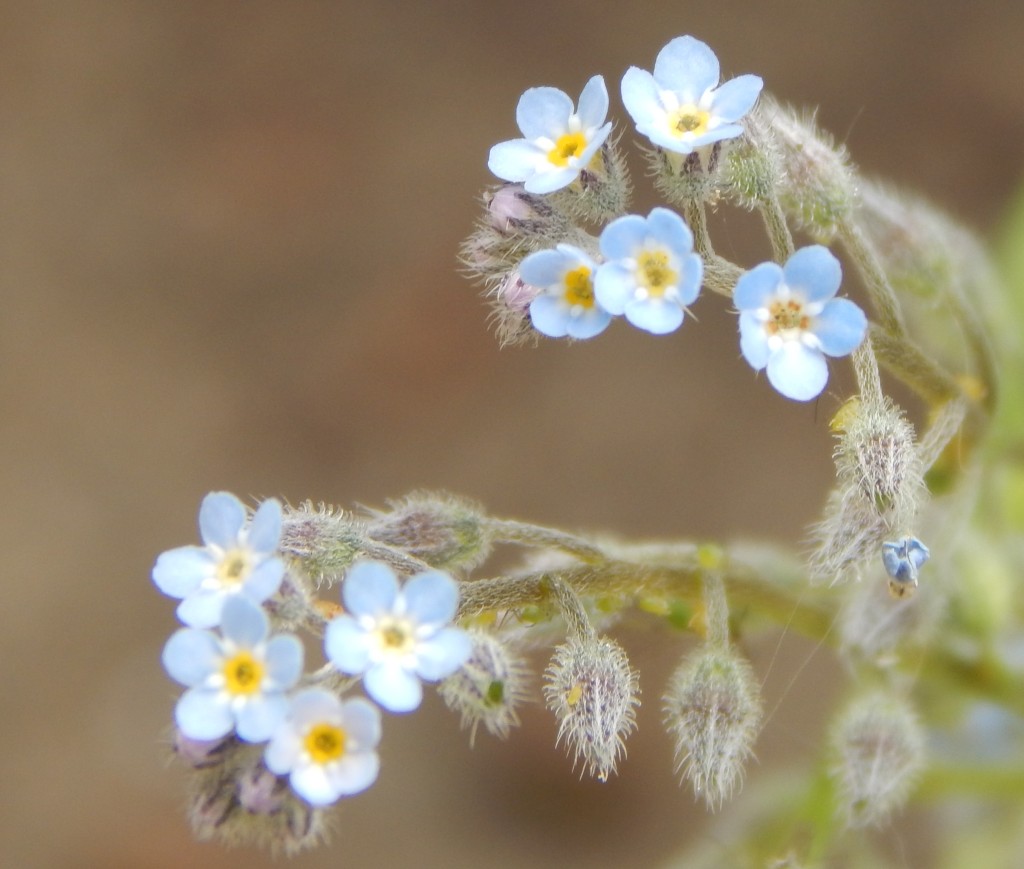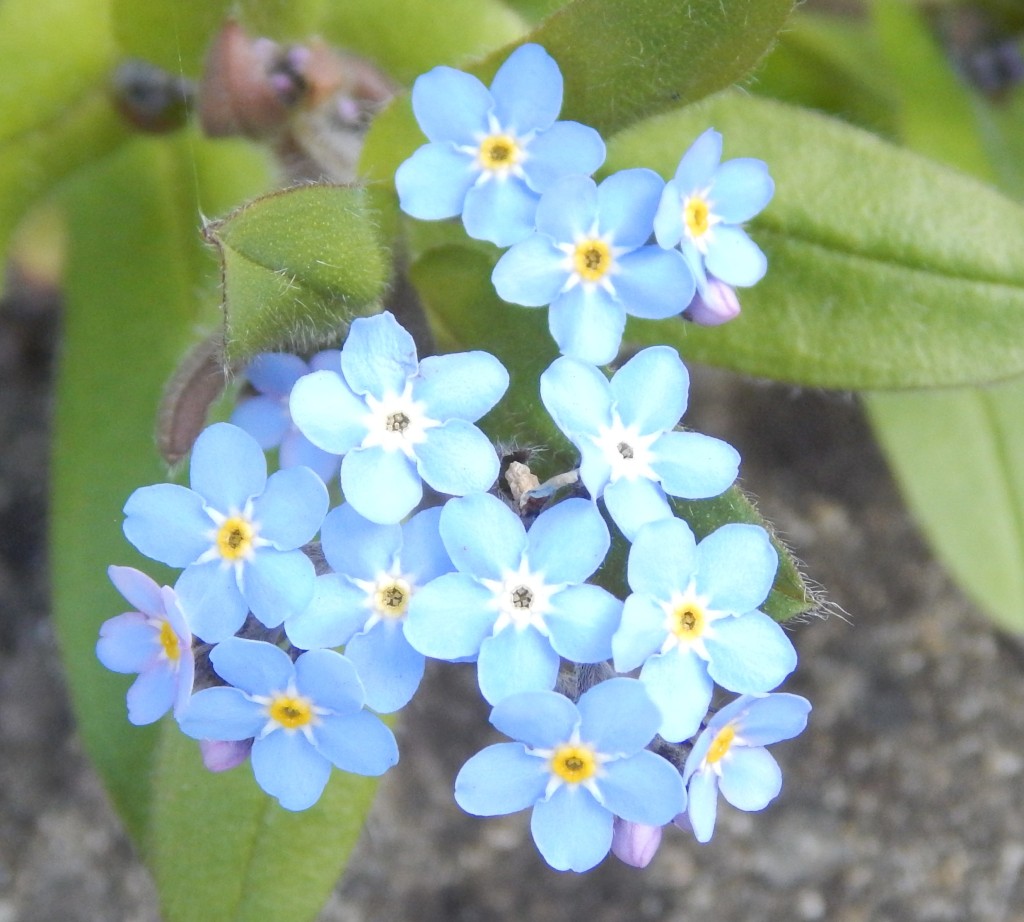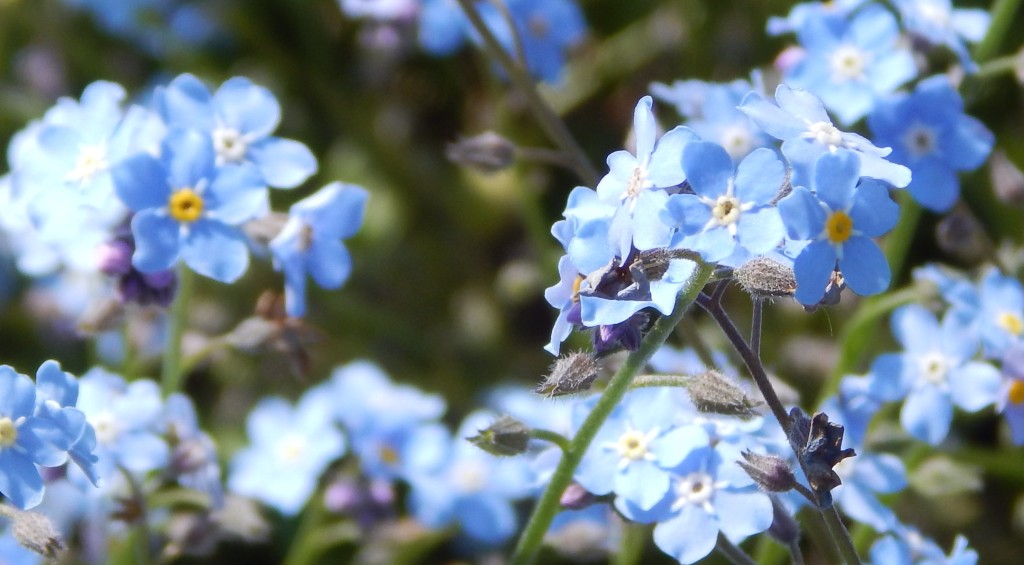
[233] Myosotis discolor, Changing Forget-me-not
Myosotis scorpiodes, Water Forget-me-not
Myosotis sylvatica, Woodland Forget-me-not
Introduction
Myosotis discolor, the Changing Forget-me-not, is a wildflower which may be easily overlooked. Its tiny light blue flowers with yellow centres can go unnoticed. Myosotis scorpiodes, the True Forget-me-not or Water Forget-me-not, is a similar looking wildflower typically found near water. Myosotis sylvatica, the Wood (or Woodland) Forget-me-not, is cultivated in many varieties as a garden plant.
These and other species of Myosotis may be called just Forget-me-nots. Some species, especially Myosotis scorpiodes, are sometimes called Scorpion Grass but are not, of course related to Scorpions (close relatives of Spiders.)
Myosotidium hortensia, The Chatham Islands Lily or Giant Forget-me-not, is a fairly close relative endemic to the Chatham Islands (a tiny archipelago 500 miles from the main islands of New Zealand.)
Taxonomy
Kingdom – Plants
Division – Vascular Plants
Class – Angiosperms (Flowering Plants)
Order – Boraginales
Family – Boraginaceae
Subfamily – Boraginoideae
Genus – Myosotis
Scientific Names – Myosotis discolor and others.
Many varieties and cultivars are available, mostly M sylvatica and some M scorpiodes.
Name
Other languages call these flowers by similar meaning names. The name Forget-me-not was introduced into England by King Henry IV in about 1400 AD from the German Vergissmeinnicht.
The Medieval Latin myosotis come from Ancient Greek roots muos-otis (or myos-otis) meaning mouse-ear, from the shape of its leaves. See [232] Mouse.
References to scorpions relate to the uncurling inflorescence like a scorpion’s tail.
Description
Myosotis discolor is a low growing annual or perennial plant with tall, slender stems and tiny flowers.

Tiny flowers (about one or two millimetres), which emerge at the top of the stems from hairy buds, are star shaped with five pale blue petals and a distinct yellow centre. They may be more yellow or cream on first emerging and become darker blue – hence the common name ‘Changing’ and the Latin ‘discolor.’




Myosotis scopioides is very similar, native to a wider area of Eurasia. It is found in damp or wet habitats and can survive underwater or form floating rafts. Its flowers are about a centimetre across.



I can’t be sure of the exact species of my pictures.
Habitat and use
Myosotis discolor is native to Western Europe but can be found across America as an introduced species.
As for may posts I have to say that cultivars and varieties are available as garden plants for various species and hybrids, especially Myosotis sylvatica.




The flowers of Myosotis have traditionally been a symbol of friendship and remembrance – hence the name Forget-me-not. It is used in various countries as a symbolic flower including remembrance in a way we usually associate with [248] the Poppy.
Other Notes
Because of its thin stems, small leaves and tiny flowers, Forget-me-nots are difficult to spot. They are also hard to photograph as most cameras now auto-focus and may focus on the background. You need close pictures to appreciate the colours within the flowers.
See also
Other flowers in the family Boraginaceae include [332] Comfrey, [254] Green Alkanet and [121] Viper’s Bugloss. This family tends to have plants with blue flowers.
